Standing cable rows are often used in upper-body workouts because they are a great way to work the middle back, biceps, lats, and shoulders. This exercise also strengthens your lower back and core.
The standing cable row can be performed in different grip positions and attachments.
Changing how you hold the cable attachment emphasizes the muscles worked. Try an underhand, overhand, or neutral grip.
- An underhand grip targets the biceps and upper back muscles,
- while an overhand grip focuses on the lats and middle back muscles.
- The main benefit of neural grip is that it takes stress off the elbow.
You can also try the Wide Grip vs. Narrow Grip row.
- Using a narrow grip will help you hit your lats and middle and lower traps more. Additionally, the biceps receive a greater workout.
- A wide grip will enhance the emphasis on the rhomboids and rear deltoids.
You can also try single-arm or both-arm rows variations … Be more creative!
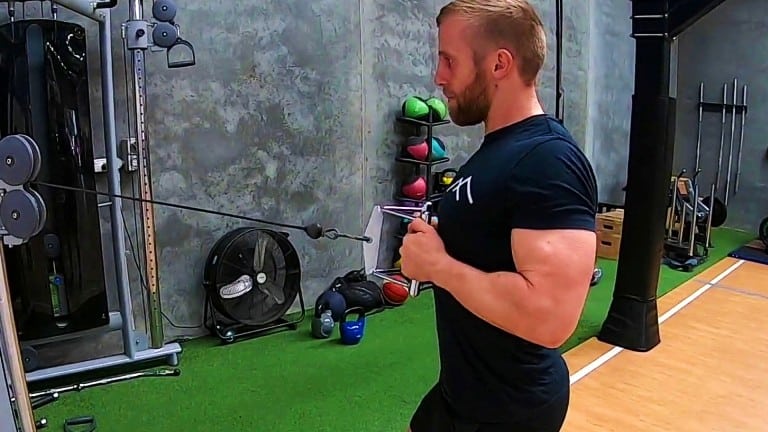
Standing Cable Row Muscles Worked
The standing cable row is a compound exercise, which means it works many muscles simultaneously.
The main muscles worked during the standing cable row are:
Secondary muscles worked during the standing rows:
The muscles in the legs stabilize the body as either dynamic or static stabilizers.
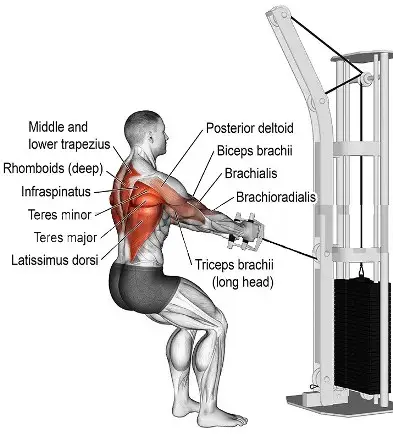
How To Do Standing Cable Row
- Stand in front of a cable machine with your feet shoulder-width apart.
- Grab the V-bar with both hands.
- Step back to create tension on the cable, keeping your back straight.
- Pull the handle towards your midsection, squeezing your shoulder blades together as you do so.
- Pause momentarily, then slowly release the handle back to the starting position.
- Do 8–10 reps and 3–4 sets
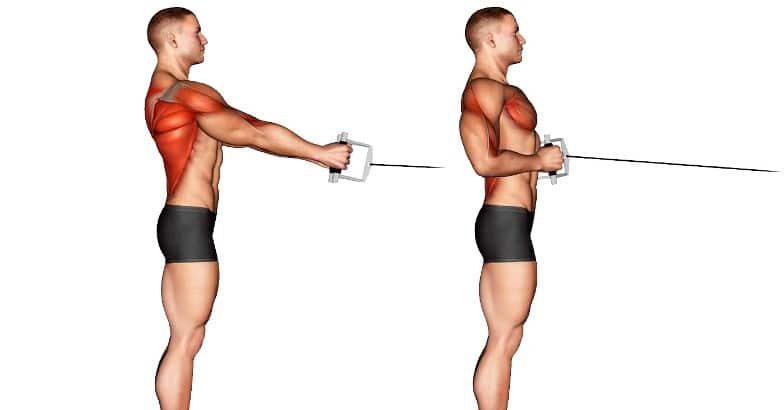
Standing High Cable Row
The standing cable high rear delt row is a very effective and functional exercise for building muscle and strength in the upper back and rear deltoids. This movement also hits the traps, rhomboids, and biceps.
The adjustable pulley is set at a high position in this standing row.
Try other variations of standing high cable row:
- Neutral grip standing cable high row
- Wide grip high row
- High cable underhand row
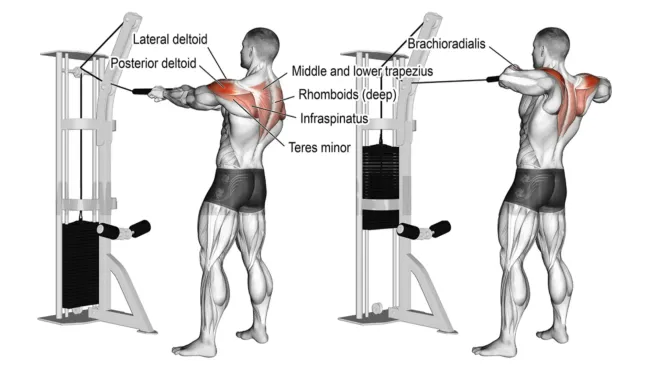
How To Do
- Attach a rope to a pulley about chest level or above.
- Keep your feet shoulder-width apart and your knees slightly bent.
- Hold one end of the rope in each hand and step backward until the rope is pulled taut.
- Retract your shoulder blades and pull your elbows back to pull the rope towards your chest.
- Hold the contraction for a second, then slowly return the rope to the starting position.
Tips
- Keep your rear delts engaged by retracing your shoulder blades.
- It is important to maintain the right posture while working out.
- Do 3–4 sets of 10–12 repetitions, with a rest period of 30–60 seconds between sets.
Know More: 18 Best Cable Back Workout And Exercises For Wider Back
Standing Low Cable Row
The standing low cable rope row allows for a greater range of motion than the standard standing cable row.
The rope attachment allows you to pull the cable towards your waist, which can help to engage the upper back and shoulders more effectively.
It is possible to perform the standing low cable row with different grip positions and attachments.
- Underhand grip standing low cable row
- V-bar
- Straight bar
- Long bar… Get creative!
How To Do
- Set a cable machine with a low pulley attachment. Attach a rope handle to the pulley.
- Grab the rope handle with your palms facing each other.
- Bend slightly at the knees and waist to help stabilize yourself.
- Engage your back muscles, pull the rope towards your waist, and squeeze your shoulder blades together.
- At the end of the movement, pause for a moment.
- Then, slowly return the rope and go back to the starting position.
Tips
- Keep your core engaged to keep your body form.
- Avoid rounding your shoulders or arching your back during the exercise.
- Instead of using your arms or shoulders, focus on using your back muscles to start the movement.
One Arm Standing Twisting Cable Row
The single-arm standing cable row is a unilateral exercise that helps isolate and correct muscle imbalances.
The exercise’s standing and twisting motions require greater core activation, which can help improve overall stability and balance.
You could also try other variations of the single-arm standing cable row.
- Single arm standing low cable row
- One arm cable twisting high row
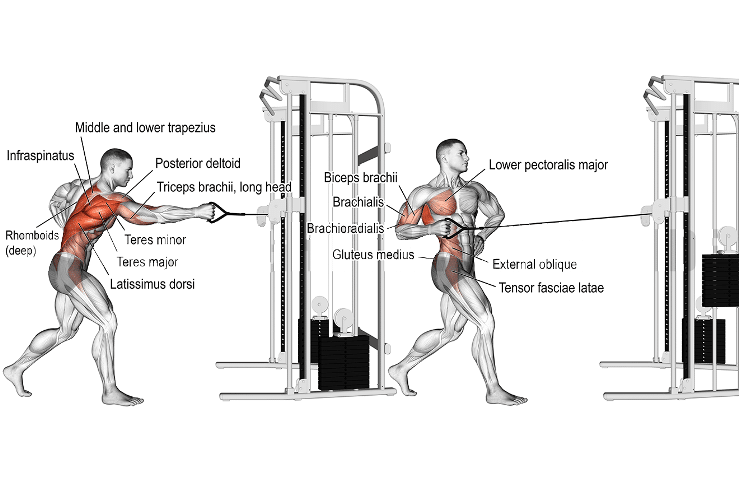
How To Do
- Attach a single grip handle to the cable pulley.
- Grab the handle with your right hand.
- Keep your elbows close to your sides as you pull the d handle towards your lower chest.
- As you pull the D-handle towards your chest, twist your torso to the right.
- Then, return to the starting position.
- Repeat the exercise for the number of reps you want.
- Then, switch to your left.
Tips
- During the movement, the twist further engages the lat muscle.
- Do not twist your waist beyond feeling a mild stretch in your side.
Best Alternatives Of High Cable Row
You can try these alternatives if you’re looking for a similar exercise to replace the standing cable row during your training sessions.

Manish is a NASM-certified fitness and nutrition coach with over 10 years of experience in weight lifting and fat loss fitness coaching. He specializes in gym-based training and has a lot of knowledge about exercise, lifting technique, biomechanics, and more.
Through “Fit Life Regime,” he generously shares the insights he’s gained over a decade in the field. His goal is to equip others with the knowledge to start their own fitness journey.
